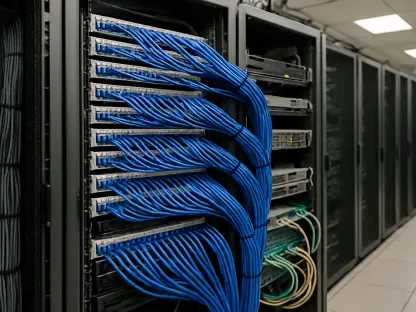In the realm of cybersecurity, sentinel technologies have taken a transformative leap, especially with the introduction of agentic AI systems capable of autonomous threat response. The spotlight recently fell on SentinelOne’s Purple AI Athena at the RSAC Conference in San Francisco, marking a significant milestone in the evolution of Security Operations Center (SOC) technologies. Not merely an enhancement but rather a revolutionary stride, Athena embodies the shift from traditional AI interaction models requiring human intervention to those that autonomously tackle complex cybersecurity challenges. This paradigm promises to drastically accelerate threat detection and remediation processes, providing a pivotal advantage in today’s fast-paced digital landscape.
SentinelOne’s Technological Advancement
Progression from Chatbots to Autonomous Systems
A notable aspect of recent technological evolution in SOC environments is the transition from conversational AI chatbots to sophisticated decision-making platforms. Purple AI Athena stands at the forefront, epitomizing AI that can autonomously address cyber threats without human query intervention. Such advancements reflect SentinelOne’s legacy of pioneering solutions, such as Singularity Hyperautomation—a no-code platform designed to enhance workflow connectivity. By understanding lessons from these initiatives, Athena is crafted to integrate multiple security solutions, overriding the once-essential perpetual human oversight and control. Stewart’s metaphor of individual solutions as ‘boxes’ aptly conveys this concept, suggesting that Athena’s integration of these ‘boxes’ can achieve more comprehensive cybersecurity outcomes than previously possible.
Enhancing Workflow and Efficiency
Athena’s design revolves around three core components: rapid analysis at machine speeds, autonomous remediation loops, and versatile data source integration. Such architecture ensures a robust acceleration in threat detection, significantly reducing alert fatigue and elevating SOC skill sets by replicating the analytical reasoning employed by seasoned analysts. Noteworthy is Athena’s capability to autonomously refine detection engines to counter novel threats, seamlessly blending into existing Security Information and Event Management (SIEM) systems and security data lakes. This integration avoids costly migrations, showcasing AI’s potential to revolutionize security operations through enhanced machine-speed responsiveness against sophisticated cyber threats. Athena’s agility not only improves immediate threat recognition but also layers intelligence onto existing security frameworks, a necessity in navigating today’s intricate cybersecurity landscape.
Addressing Accuracy Concerns
AI Reliability and Human Comparison
The integration of agentic AI platforms like Athena presents remarkable prospects yet invokes a conversation about AI’s accuracy and trustworthiness. Occasional hallucinations and biases have paved the pathway to skepticism; however, SentinelOne’s assertion that AI is ‘accurate enough’ is akin to human reliability. While recognizing AI’s vulnerabilities, the narrative positions AI parallel to human capabilities, emphasizing its unmatched speed and endurance over human frailties. The discourse acknowledges continuous improvement endeavors towards refining AI systems, portraying a future where AI might bridge existing operational gaps stemming from human limitations within SOC environments. Such developments highlight the importance of transparent communication about AI capabilities and operational risks to foster trust and optimize cybersecurity strategies effectively.
Continuous Improvement and Future Prospects
Related evolutions in the domain of agentic AI platforms capture the burgeoning interest in these technologies. There is a clear acknowledgment of the expanding investment and research aimed at refining AI systems to elevate cybersecurity operations further. The discussion emphasizes the significance of ongoing meticulous efforts to enhance precision, counter bias, and ensure robust threat response. As AI learns from vast data ecosystems, it becomes increasingly capable of delivering precise, contextually rich outcomes, fostering a security environment well-equipped to deal with the threats of tomorrow. This reality underscores the indispensable role of AI in augmenting the efficiency and efficacy of cybersecurity endeavors—a promising outlook for organizations striving for lean, adaptive security mechanisms.
Charting Future Cybersecurity With AI
The field of cybersecurity is experiencing groundbreaking advancements with sentinel technologies, particularly through the advent of agentic AI systems poised for autonomous responses to threats. A recent highlight in this domain was SentinelOne’s introduction of Purple AI Athena at the RSAC Conference in San Francisco, symbolizing a vital step forward in Security Operations Center (SOC) technology evolution. Athena is not merely an upgrade; it represents a revolutionary leap forward, transitioning from traditional AI interaction models that needed human input to fully autonomous systems capable of addressing complex cybersecurity issues independently. This shift is set to dramatically enhance the speed and efficiency of threat detection and remediation, which is crucial in our rapidly evolving digital environment. The promise of faster and more efficient cybersecurity processes is becoming increasingly essential as digital threats grow in sophistication and frequency, underscoring the importance of such advancements.









